Sustainability
Reduction of production waste | Our Contribution Activities to SDGs
The Fuji Electric Fukiage Factory’s waste reduction project
Aiming to achieve a circular economy where no waste is produced
Aiming to achieve a circular economy where no waste is produced
Published in November 2023. Affiliations and responsibilities are as of the time of the interview.
The focus of resource circulation efforts in business activities needs to transition from practicing the 3Rs (Reduce, Reuse, Recycle) to building a circular economy. To respond to this global trend, we need to change the direction of our efforts. We need to focus on building a business model that doesn’t produce waste instead of thinking about what to do with the produced waste. In the Environmental Vision 2050, Fuji Electric stated its vision to build a green supply chain that aims for zero environmental footprint and to promote the 3Rs. Accordingly, the company has reduced the amount of waste sent to landfill by putting effort into reusing resources. In addition to these efforts, we’ve currently started working on activities aimed at achieving a circular economy. To achieve a circular economy, we need new measures that reform our business model by reviewing the materials we use, product structure, and other factors. Implementing these new measures requires engaging in our existing 3R efforts in full swing and achieving results.
Today, we will introduce the Fukiage Factory’s efforts that helped them eliminate the waste sent to landfill and the thoughts of the members who led these efforts.
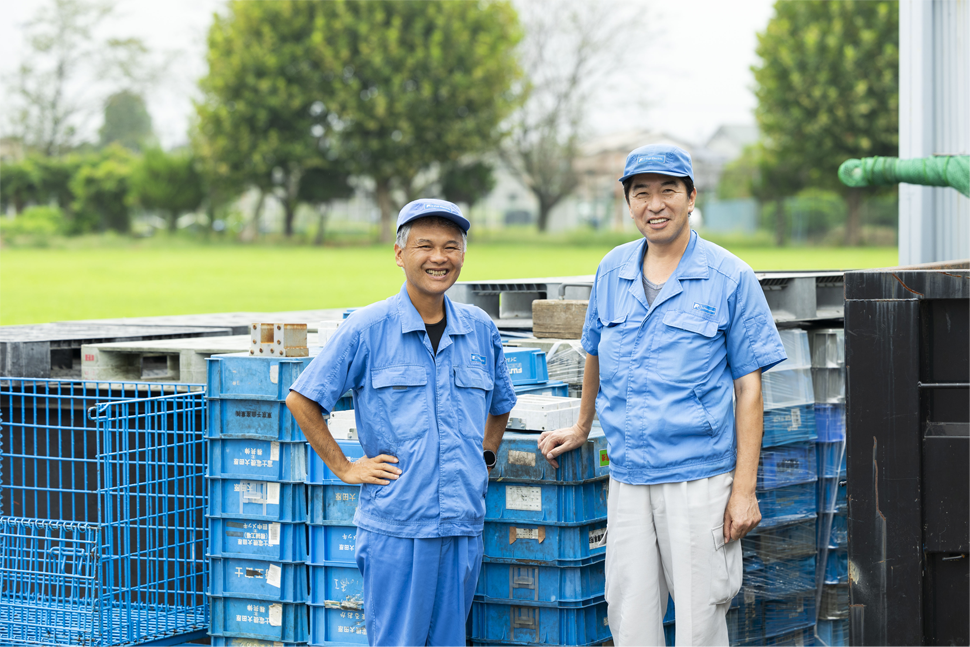
Toward a company-wide reduction of the amount of waste sent to landfill
In the Environmental Vision 2050 announced in 2019, Fuji Electric declared its intention of working to achieve a recycling-oriented society. Kazutaka Ikemi, Senior Manager, Environmental Management Department, says the following about the policies and measures related to this matter.
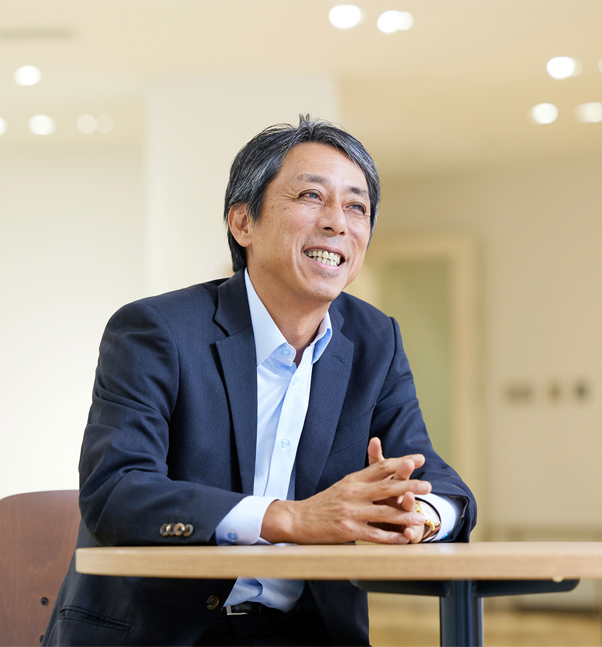
“At Fuji Electric, we promote the reduction of the amount of waste sent to landfill in an effort to achieve a recycling-oriented society. We set the ratio of waste disposed of during production and sent to landfill (waste sent to landfills/total waste) as a key performance indicator. We monitor the results of the ratio of waste sent to landfill in each production base, define the issues at each one, and then start working on solutions and promoting the reduction of the amount of waste sent to landfill. Aside from sending it to landfills, the produced waste can be used in material recycling (making something new from the collected waste), chemical recycling (breaking down resources with the power of chemistry), and thermal recycling (gathering and using the heat produced by incinerating waste). We believe that we need to first prioritize eliminating the waste sent to landfill, and then increase the material and chemical recycling rates. At the same time, we need to engage in efforts that take into account the transition from the 3Rs to a circular economy.”
In FY 2022, we succeeded in lowering the total company-wide ratio of waste sent to landfill in production bases inside and outside Japan to an all-time low of 0.5%, lower than the target of 1.0%. Especially in production sites inside Japan, we have been able to steadily maintain this ratio below 1.0% for the past five years thanks to the efforts toward reducing the amount of waste sent to landfill.
The Fukiage Factory’s activities that reduce the amount of waste sent to landfill
The Fukiage Factory is an integrated production factory that does everything from parts machining to the assembly of mainly electromagnetic switches and high-voltage circuit breakers. In the parts machining process, various core technologies are used for machining materials like iron, copper, silver, and plastic through primary machining, such as plastic deformation, cutting, welding, molding, and secondary machining, such as surface treatment. Additionally, in the assembly process, fully automatic, semi-automatic, and manual assembly are used for production according to product features. Tetsuyuki Takahashi, Manager, Production Support Section, Manufacturing Department, talks about the reason they were able to succeed in eliminating waste sent to landfill.
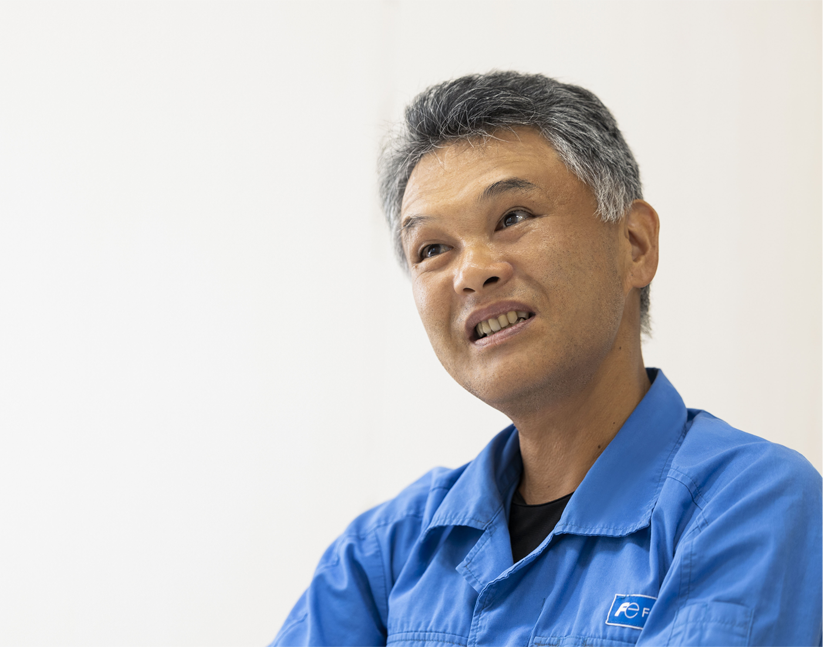
“The waste produced by the Fukiage Factory is mainly primary materials, such as iron, copper, silver, and plastic, waste liquid, such as waste oil and organic solvents produced from primary and secondary machining, product packaging, load collapse prevention products, vinyl and wood for transportation. We are able to handle this type of waste through material recycling and thermal recycling. I believe that this is the result of our continuous, long-standing effort to find partner companies so that this waste doesn’t end up in landfill. We have partnered with over 40 companies, all of which are local. We have maintained close communication while repeating trial and error to eliminate the waste sent to landfill.”
The Fukiage Factory members thoroughly investigate the waste produced from various places and carefully consider what can be recycled and how they can have others take it in exchange for money. The Fukiage Factory succeeded in eliminating the waste sent to landfill thanks to the consistent proposals and negotiations of the members. Masumi Usui, Deputy Manager, Production Support Section, who played a key role in this success, looks back on the challenges he tackled.
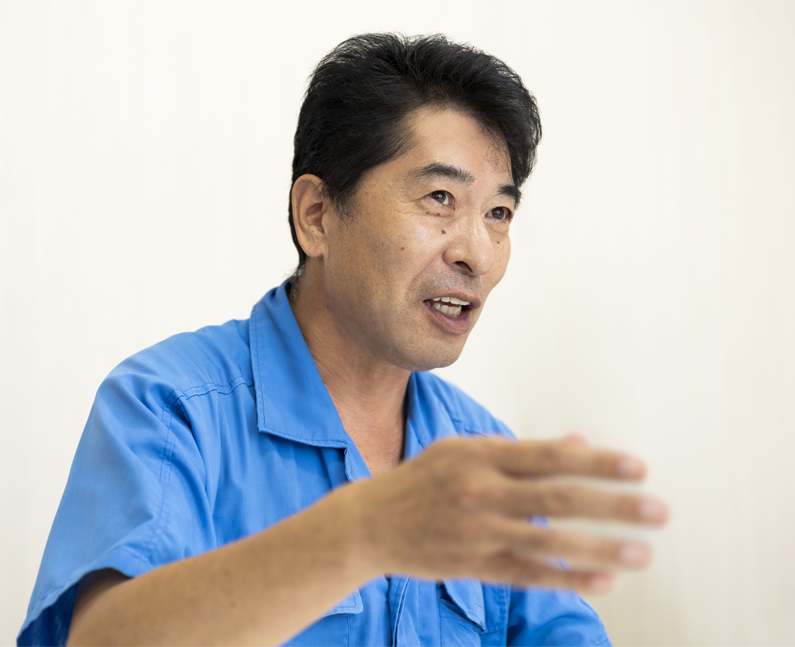
“Take the plastic cases where the metal parts go as an example. Plastics companies wouldn’t take them, but when we talked to metals companies, we learned that they were willing to take them in exchange for money. The current results are the fruit of repeating this consistent work. What is important is for us involved in this to keep thinking about the different things we can do. While establishing a relationship with partner companies, we have achieved a waste sorting system that promotes turning everything into something valuable.”
Implementing awareness of waste sorting in the “structure”
We can’t succeed in reducing the ratio of waste sent to landfill through one department’s activities alone. Learning about the vast number of parts and waste used in manufacturing is an extremely difficult task, and tackling it requires the cooperation of the site and raising awareness of waste sorting.
“When I was first put in charge of this task, waste sorting didn’t go as expected. Different kinds of materials, such as metal and plastic, were often mixed as impure materials, even though they could be broken down. We focused our efforts on our communication with the department manager in charge of the site to overcome this situation. For example, we sought cooperation by sending emails with photos attached to ask workers to break down impure materials and put them in the collection space. I believe that this kind of slow and steady work is what led to results.” (Usui)
Assigning the members of the department as dedicated transporters played a significant role in instilling awareness of waste sorting at the manufacturing site. The members in charge of transporting waste gave reminders for waste sorting, dramatically improving awareness at the site.
“We were able to come up with these ideas because we had knowledge about supply chain management. I believe we were able to fully use our experience of continuously making improvements at the manufacturing site. The key was implementing the communication for raising awareness in the ‘structure.’ Taking responsibility for the collection and transportation also saved effort at the site.” (Takahashi)
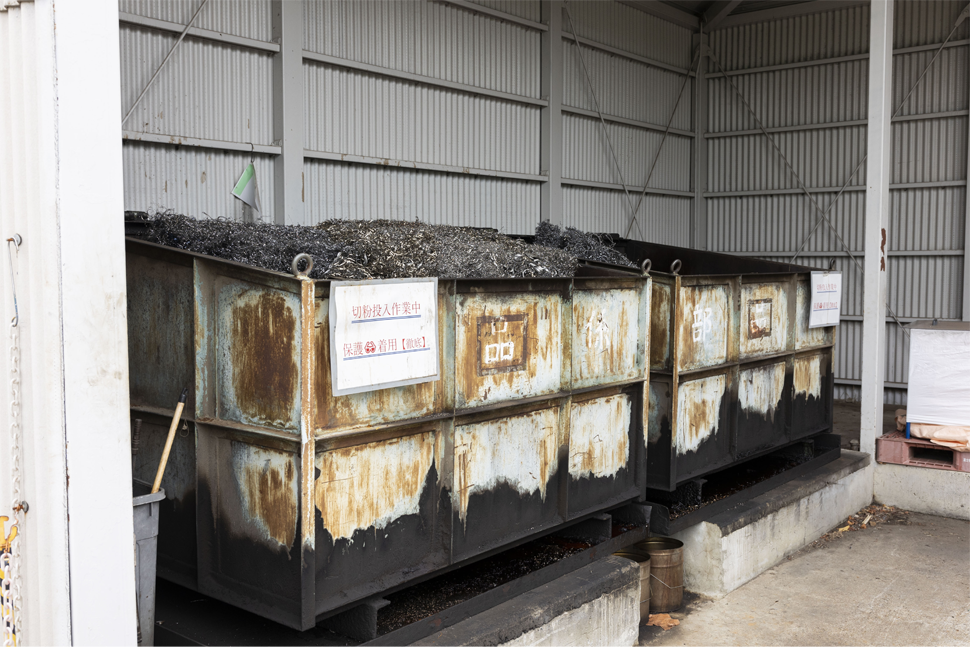
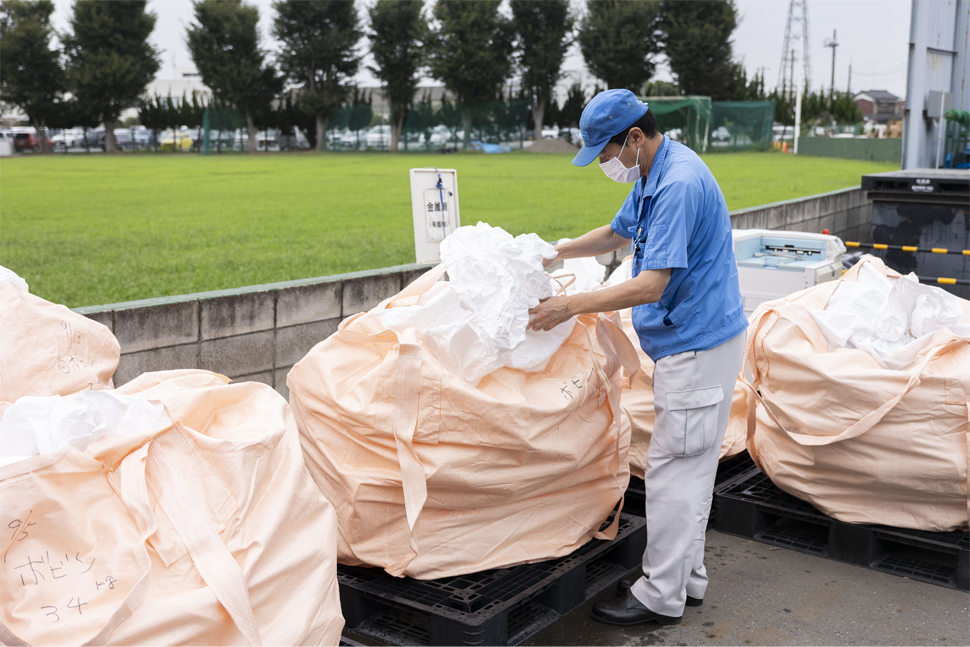
Toward a zero-waste future
The 3Rs that Fuji Electric has promoted aim to recycle the produced waste, meaning it anticipates waste production. On the other hand, the circular economy concept aims for the circular use of resources, which requires business operators to make an effort to stop producing waste. The Act on Promotion of Resource Circulation for Plastics (the new plastic law) implemented in April 2022 is a symbolic move toward this. Therefore, further development will be required for the initiatives aimed at reducing waste. The members state their future prospects and express their enthusiasm as follows.
“Eliminating waste is something that not only our team needs to work toward, but rather the entire factory. Being aware of new issues is important, but I believe that continuing our current efforts is also crucial. It is essential that we efficiently transform the produced waste into something valuable. We will continue working together as a team toward a manufacturing structure that meets society’s expectations.” (Usui)
“Going forward, not only will we be required to recycle plastic, but also reduce the total amount of waste produced. When we reanalyzed the plastic waste at the Fukiage Factory, we found that a large amount of plastic is brought in from overseas in the form of packing materials for parts. We will start by tackling this to improve the situation. We are currently working on cooperation across departments and taking concrete actions.” (Takahashi)
“At Fuji Electric, we will continue aiming to ultimately reach zero emissions by 2050. We will keep making an effort to achieve a circular economy, from product design to waste treatment. We especially believe that reducing plastic waste (in compliance with the new plastic law) is a major challenge, so we are currently investigating the actual situation of plastic waste production at production sites. We are analyzing the cause of plastic waste production to reduce it. In addition, we are expanding the reuse of plastic waste by ensuring waste sorting and reviewing waste treatment partners as necessary. With this, we are starting by investigating the actual situation to achieve a circular economy. As for our next step, we plan to establish a supply chain that effectively utilizes resources. Therefore, we believe that we need to ultimately eliminate waste sent to landfill in the entire company, and we will continue to promote efforts inside and outside Japan.” (Ikemi)
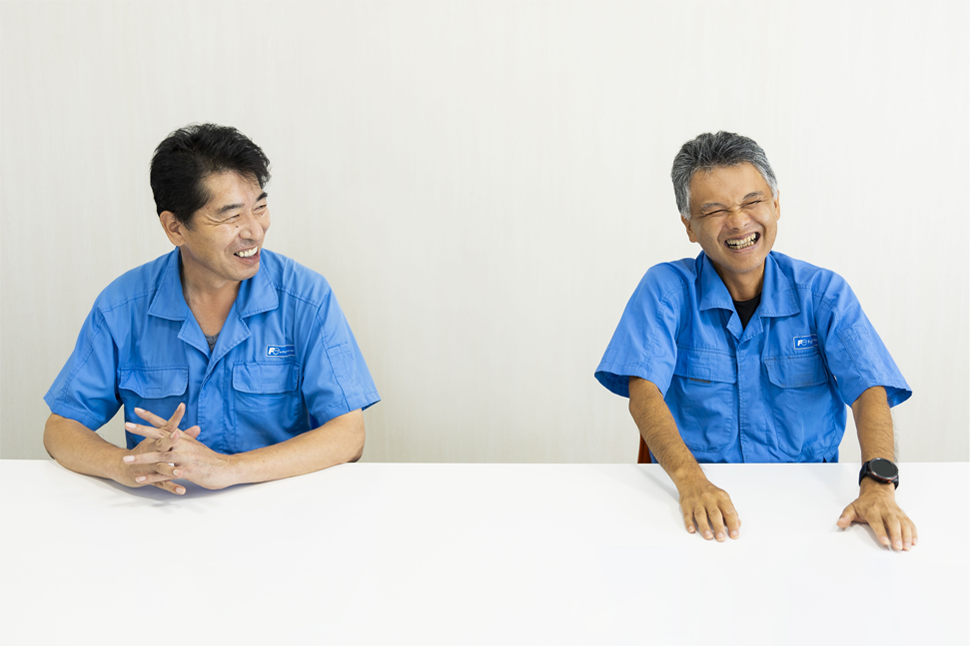
Contribution to SDGs
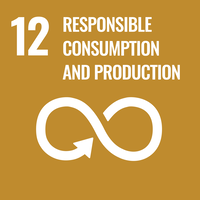
With the Fuji Electric Code of Conduct “Respect and value the global environment,” we position initiatives to conserve the global environment as one of the most prioritized management issues. SDGs target “12. Responsible Consumption and Production” is one of our priority goals. As a direction for our long-term environmental activities, we have established “Environmental Vision 2050” and “FY2030 Goals,” reducing the amount of waste sent to landfill throughout the supply chain, including our production activities.
